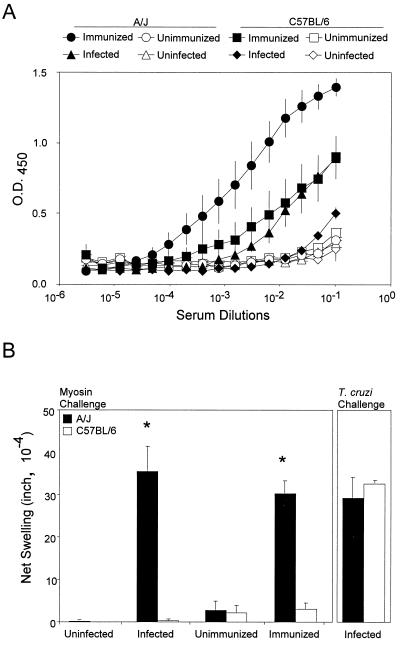FIG. 4.
A/J mice develop stronger myosin autoimmunity than do C57BL/6 mice both upon T. cruzi infection and upon myosin immunization. Groups of A/J or C57BL/6 mice were infected with 104 T. cruzi trypomastigotes (infected), injected with PBS (uninfected), immunized with myosin (immunized), or immunized with PBS-CFA (unimmunized). (A) Myosin autoantibody production. The infected and immunized groups contained 10 mice each while uninfected and unimmunized groups contained four mice each. At 21 d.p.i., serum from each mouse was individually tested for myosin-specific IgG in a myosin ELISA. Each datum point represents the mean OD450 value of the mice in each group, and the error bars indicate the standard errors of the means. All experimental groups were significantly different (P < 0.001) from their respective controls. Higher levels of cardiac myosin-specific IgG were detected in infected A/J than in infected C57BL/6 mice (P < 0.001) and in myosin-immunized A/J than in myosin-immunized C57BL/6 mice (P = 0.002). (B) Myosin and T. cruzi-specific DTH was determined by a 24-h ear swelling assay at 21 d.p.i. Myosin DTH was measured in mice as described for panel A. T. cruzi DTH was measured in five infected A/J and five infected C57BL/6 mice. Error bars indicate standard errors of the means. ∗, P of <0.001 compared to the C57BL/6 group.

